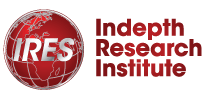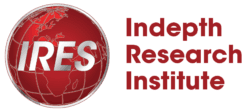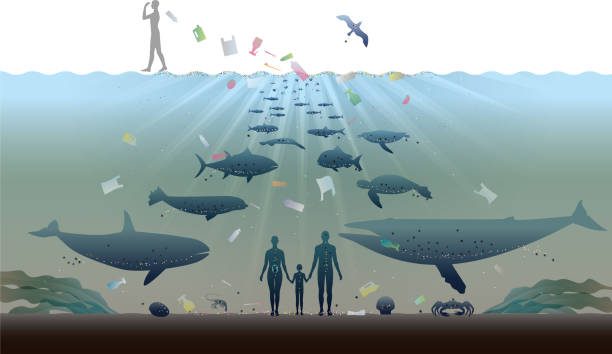In recent years, the conversation around marine pollution has expanded beyond environmental degradation to include a critical, often overlooked dimension, human health. The ocean is not only the planet’s life-support system, regulating climate and producing oxygen, but also a vital source of food and livelihoods for over three billion people globally (UNEP, 2024). Yet, as pollution intensifies, its impacts ripple far beyond marine ecosystems, reaching our dinner plates, our economies, and our wellbeing.
Contents
- 1 The Hidden Pathways: How Pollution Travels Through the Food Chain
- 2 Coastal Pollution and Waterborne Illnesses
- 3 The Economic and Social Dimensions
- 4 Toward a Healthier Ocean, a Healthier Future
- 5 Building Expertise for Impact
- 6 Conclusion
- 7 Frequently Asked Questions (FAQs)
- 7.1 How does marine pollution affect human health?
- 7.2 What are the main sources of marine pollution?
- 7.3 Why is marine pollution a growing global concern?
- 7.4 What steps can governments and organizations take to reduce marine pollution?
- 7.5 How does the IRES Marine Pollution and Management Course help professionals respond to these challenges?
- 7.6 Who should take this course?
The Hidden Pathways: How Pollution Travels Through the Food Chain
To begin with, marine pollution comes in many forms, from plastics and heavy metals to agricultural runoff and untreated sewage. Over time, these contaminants enter the food chain through small marine organisms like plankton and shellfish. Pollutants build up as larger species eat smaller ones, eventually entering our food chain. Studies show high levels of microplastics and POPs in tuna, mackerel, and sardines (FAO, 2023). These toxins disrupt hormones, weaken immunity, and increase chronic disease risks.


Coastal Pollution and Waterborne Illnesses
In coastal regions, particularly in developing nations, the direct discharge of wastewater and solid waste into marine environments exacerbates health risks. According to the World Health Organization (WHO, 2024), over 250 million cases of waterborne illnesses each year are linked to contaminated coastal waters. Moreover, people living near polluted coastlines face heightened exposure to pathogens and toxins through bathing, fishing, and recreational activities.
Also Read: Protecting Our Blue Lifeline: Why Marine Environment Protection Matters
Additionally, warming sea temperatures and nutrient pollution have led to harmful algal blooms (HABs), explosive growths of toxin-producing algae. These blooms contaminate shellfish and fish, causing serious conditions such as paralytic shellfish poisoning and ciguatera fish poisoning. Notably, these cases remain underreported but are increasing rapidly due to climate change and declining water quality.
The Economic and Social Dimensions
The consequences of marine pollution extend far beyond physical health. Declining fish stocks, seafood contamination, and coastal degradation directly affect food security and livelihoods, especially for small-scale fishers and coastal communities. According to the OECD (2023), the global economic losses attributed to marine pollution exceed $350 billion annually, including healthcare costs, loss of fisheries productivity, and tourism decline.


Furthermore, these impacts are unequally distributed. Communities in the Global South, which depend heavily on the ocean for nutrition and income, often bear the brunt of pollution caused by industrialized nations. Therefore, this imbalance underscores the urgent need for equitable governance, inclusive collaboration, and shared accountability in marine resource management.
Toward a Healthier Ocean, a Healthier Future
Addressing marine pollution is, therefore, a public health priority as much as an environmental one. Policies that integrate marine ecosystem management with health frameworks can yield profound benefits. For instance, reducing single-use plastics, strengthening wastewater treatment systems, and enforcing stricter discharge regulations are key steps forward.
Equally important, raising awareness and encouraging behavior change across industries and communities are essential to achieving impact. When individuals and institutions recognize that protecting the ocean also means protecting human lives, collective responsibility begins to take root.
Building Expertise for Impact
At IRES, our Marine Pollution and Management Course makes a transformative difference. This program equips environmental professionals, policymakers, and marine scientists with the knowledge to:
-
Assess pollution sources and pathways using scientific tools.
-
Design and implement marine pollution monitoring frameworks.
-
Link marine ecosystem health to public health outcomes.
-
Integrate marine pollution management into national and regional policy frameworks.
Through these approaches, participants not only gain technical knowledge but also learn to translate science into actionable policy. Ultimately, IRES empowers practitioners to embed ocean protection into broader sustainability and health agendas, ensuring lasting impact.
Conclusion
The story of marine pollution is about the food we eat, the air we breathe, and the communities we sustain. Protecting the ocean means protecting ourselves. Through science, policy, and education, we can reverse the tide and build a future where both people and the planet thrive.


Frequently Asked Questions (FAQs)
How does marine pollution affect human health?
Marine pollution impacts human health through contaminated seafood, polluted recreational waters, and degraded coastal ecosystems. Pollutants such as microplastics, heavy metals, and harmful algal toxins enter the food chain and can lead to illnesses ranging from gastrointestinal infections to chronic diseases and hormonal disruptions.
What are the main sources of marine pollution?
The major sources include land-based activities such as agricultural runoff, plastic waste, sewage discharge, industrial effluents, and oil spills. Over 80% of marine pollution originates on land, making integrated land-ocean management essential.
Why is marine pollution a growing global concern?
Marine pollution is intensifying due to urbanization, population growth, and unsustainable consumption patterns. Its effects now extend beyond marine ecosystems to impact food security, public health, and economic stability, especially in coastal and island nations.
What steps can governments and organizations take to reduce marine pollution?
Effective interventions include enforcing pollution control regulations, investing in wastewater treatment, promoting circular economy approaches, and supporting coastal community resilience programs. Furthermore, international collaboration and regional frameworks such as the UN Decade of Ocean Science for Sustainable Development also play a key role.
How does the IRES Marine Pollution and Management Course help professionals respond to these challenges?
The course equips participants with the technical and policy tools to identify, monitor, and mitigate pollution threats. Through practical modules and case studies, participants learn how to integrate marine ecosystem health into environmental governance, coastal planning, and climate resilience strategies.
Who should take this course?
This course is ideal for environmental officers, marine scientists, policymakers, public health professionals, and development practitioners working in sectors such as fisheries, water resources, and coastal management.
I’m a storyteller at heart and a strategist by trade. With over 3 years of experience in digital marketing, content creation, and brand communications, I’ve worked with leading institutions and dynamic brands to shape narratives that resonate. From educational spaces and corporate training to real estate and sustainability, I’ve crafted content that not only speaks but delivers. This blog is my creative space, a reflection of everything I’ve learned (and keep learning) about writing with purpose, building trust, and turning ideas into impact.








Comment here